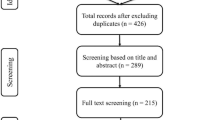Abstract
There is growing interest in the use of lidar for remote sensing of vegetation owing to the emergence of reliable and rugged lasers and highly sensitive detectors. Lidar remote sensing has a distinct advantage over conventional techniques in vegetation remote sensing due to its capability for three-dimensional characterization of vegetative targets. The Multiwavelength Airborne Polarimetric Lidar (MAPL) system was developed primarily for vegetation remote sensing applications from an airborne platform of up to 1,000 -m altitude. The lidar system has full waveform capture and polarimetric measurement capability at two wavelengths in the near-infrared (1064 nm) and the green (532 nm) spectral regions. This study presents preliminary ground-based lidar reflectance measurements on a variety of deciduous and coniferous trees under fully foliated conditions with a view towards tree species discrimination. Variations in the reflectance characteristics of selected deciduous trees under unfoliated and fully foliated conditions were also investigated. Our study reveals distinct differences in the reflectance characteristics of various trees.
Similar content being viewed by others
References
[1] M.A. Lefsky, W.B. Cohen, G.G. Parker, and D.J. Harding, “Lidar remote sensing for ecosystem studies,” Bioscience, Vol. 52, pp. 19–30, 2002.
[2] R.O. Dubayah and J.B. Drake, “Lidar remote sensing for forestry,” Journal of Forestry, Vol. 98, pp. 44–46, 2000.
[3] M.A. Lefsky, D. Harding, W.B. Cohen, G. Parker, and H.H. Shugart, “Surface lidar remote sensing of basal area and biomass in deciduous forests of eastern Maryland, USA,” Remote Sensing of Environment, Vol. 67, pp. 83–98, 1999.
[4] J.F. Weishampel, J.B. Blair, R.G. Knox, R. Dubayah, and D.B. Clark, “Volumetric lidar return patterns from an old-growth tropical rainforest canopy,” International Journal of Remote Sensing, Vol. 21, pp. 409–415, 2000.
[5] G. Sun and K.J. Ranson, “Modeling lidar returns from forest canopies,” IEEE Transactions on Geoscience and Remote Sensing Vol. 38, pp. 2617–2626, 2000.
[6] J.B. Drake, R.O. Dubayah, D.B. Clark, R.G. Knox, J.B. Blair, M.A. Hofton, R.L. Chazdon, J.F. Weishampel, and S.D. Prince, “Estimation of tropical forest structure characteristics using large-footprint lidar,” Remote Sensing of Environment, Vol. 79, pp. 305–319, 2002.
[7] J. Holmgren and A. Persson, “Identifying species of individual trees using airborne laser scanner,” Remote Sensing of Environment, Vol. 90, pp. 415–423, 2004.
[8] J.E. Kalshoven and P.W. Dabney, “Remote sensing of the earth’s surface with an airborne polarized laser,” IEEE Transactions on Geoscience and Remote Sensing, Vol. 31, pp. 438–446, 1993.
[9] J.E. Kalshoven, M.R. Tierney, C.S.T. Daughtry, and J.E. McMurtrey, “Remote sensing of crop parameters with a polarized, frequency-doubled Nd:YAG laser,” Applied Optics, Vol. 34, pp. 2745–2749, 1995.
[10] S. Tan and R.M. Narayanan, “Design and performance of a multiwavelength airborne polarimetric lidar for vegetation remote sensing,” Applied Optics, Vol. 43, pp. 2360–2368, 2004.
[11] F. Le Roy-Brehonnet and B. Le Jeune, “Utilization of Mueller matrix formalism to obtain optical targets depolarization and polarization properties,” Progress in Quantum Electronics, Vol. 21, pp. 109–151, 1997.
[12] V.A. Dlugunovich, V.A. Zaitseva, and O.V. Tsaryuk, “Changes in the polarization characteristics of He-Ne laser radiation reflected from plant leaves,” Journal of Applied Spectroscopy, Vol. 68, pp. 94–100, 2001.
[13] Y.V. Belyaev, L.V. Katkovskii, T.M. Kurikina, and V.I. Shuplyak, “Spectral-polarization contrasts in the problems of remote sensing,” Journal of Applied Spectroscopy, Vol. 68, pp. 343–349, 2001.
[14] L.V. Katkovskii, “Intensification of contrasts of spectropolarization images,” Journal of Applied Spectroscopy, Vol. 70, pp. 927–932, 2003.
Author information
Authors and Affiliations
Rights and permissions
About this article
Cite this article
Tan, S., Narayanan, R. & Shetty, S. Polarized Lidar Reflectance Measurements of Vegetation at Near-Infrared and Green Wavelengths. Int J Infrared Milli Waves 26, 1175–1194 (2005). https://doi.org/10.1007/s10762-005-7276-3
Received:
Published:
Issue Date:
DOI: https://doi.org/10.1007/s10762-005-7276-3




